How to Create and Sell Digital Products – A Beginner’s Guide
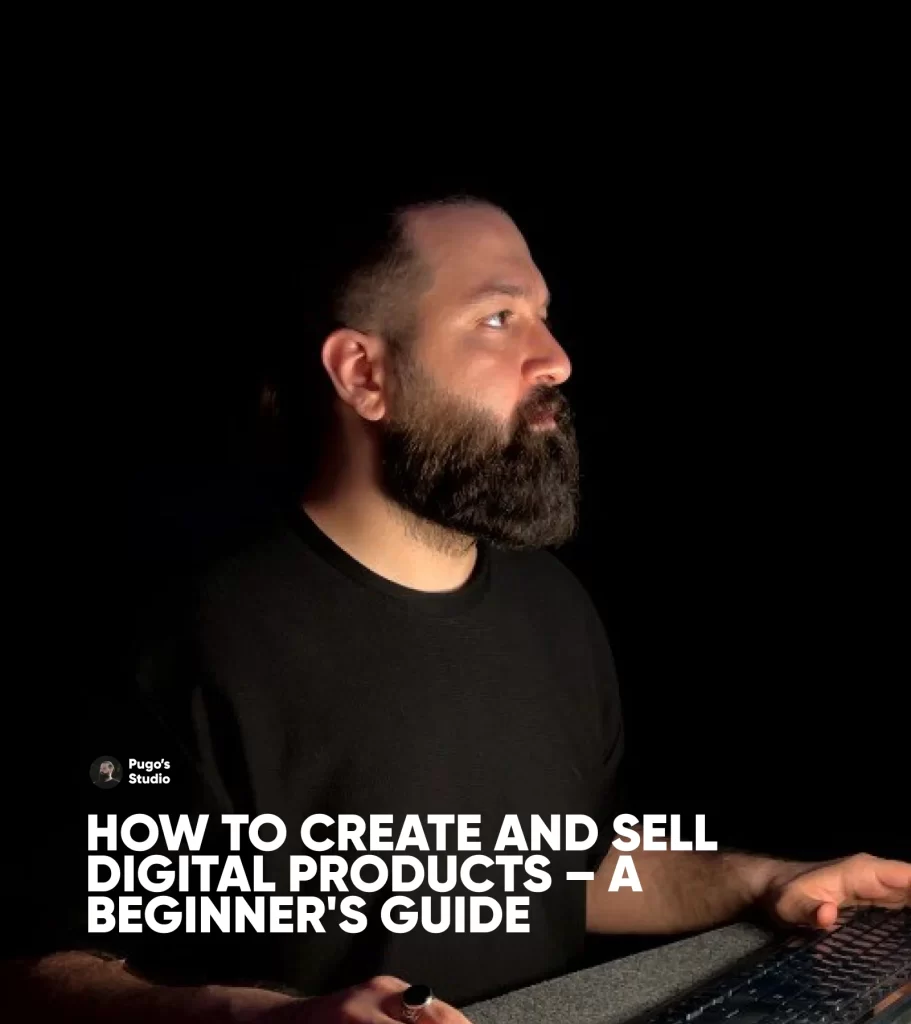
Ready to finally kickstart your digital product business? That’s awesome!
I’m thrilled to welcome you to this comprehensive guide on creating and selling digital products.
As a digital entrepreneur myself, I’ve spent a good chunk of my life exploring the nooks and crannies of the digital marketplace.
I’ve experienced the exhilaration of a breakthrough, the frustration of a setback, and the satisfaction of helping others achieve their dreams.
As I pen this, I’m proud to share that on average, my monthly revenue from selling digital products stands at $20k. There was even a month where I hit the near $40,000 mark! But it doesn’t stop there – I also earn from Google ads and affiliate marketing through my blogs and online magazines. That’s a story for another day, though! My grand ambition? To generate a revenue of over 1 million in less than the next decade across all my online ventures. It’s a lofty goal, but I’m excited for the challenge. And you know what? I’m confident that you too can hit the $10k+ monthly mark. All it takes is doing the right things, in the right way, and a sprinkle of good fortune!
I’ve put together this guide to share the wealth of knowledge I’ve gathered on this journey. My hope is that it will serve as a roadmap to help you navigate the digital landscape, avoid common pitfalls, and ultimately, achieve success in the world of digital products.
So, whether you’re a seasoned digital creator or a newbie looking to dip your toes into the digital product pool, this guide is for you. Let’s dive in!
Guess what? In this digital age, you have an amazing opportunity to make some serious income through digital products.
Think about it. You create a product once and then sell it over and over again. No worries about inventory or shipping! Whether it’s an eBook 📕, an online course 🎓, or a design template 🎨, digital products provide a scalable and cost-effective way to cash in on your expertise and creativity.
Loads of entrepreneurs, just like you, have changed their lives by diving into this lucrative market. They’re enjoying the freedom and flexibility of running an online business from anywhere in the world.
And guess what? I’m here to help you do the same. Consider this guide your all-in-one roadmap to success in the world of digital products.
I’ve got you covered, from brainstorming and creating your product, to setting up your online store, and even mastering the art of digital marketing.
By the end of this journey, you’ll have all the knowledge and tools you need to turn your ideas into profitable digital products. You’ll be all set to start your journey toward financial independence and entrepreneurial success.
So, are you ready to get started? Let’s dive in!
I’ll keep this simple and snappy, no long-winded explanations. If you need in-depth guides on a specific area of starting your digital product business, make sure to check out the blog!
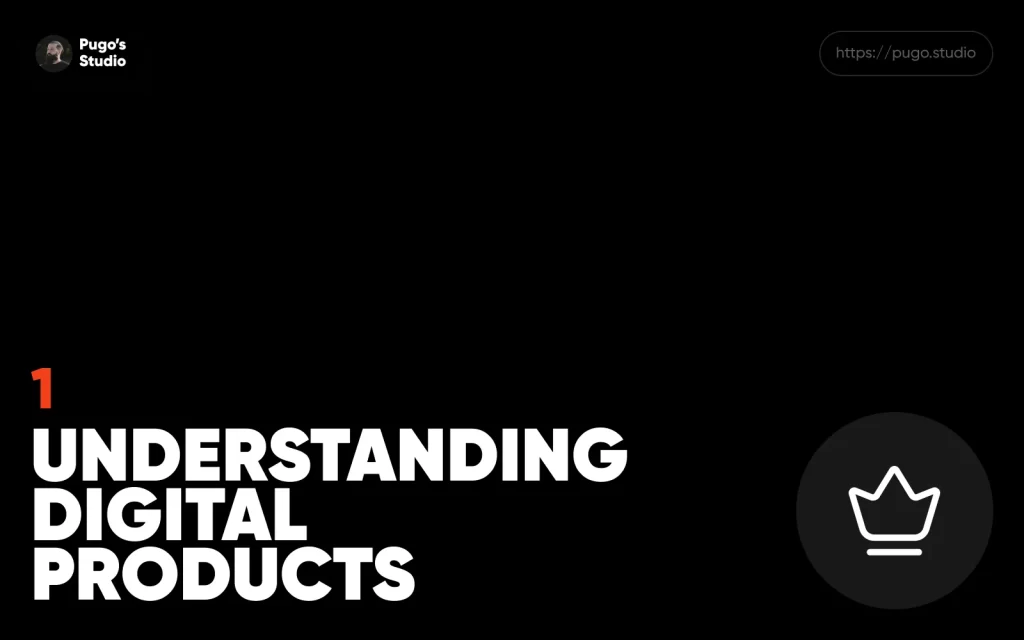
1. Understanding Digital Products
What are digital products, you ask? Well, they’re intangible goodies or pieces of media that you can sell and distribute online without the need for physical inventory. They exist in funky digital formats and are delivered electronically to your customers, making them accessible from anywhere with an internet connection. Examples of these nifty digital products include:
- eBooks: Your thoughts, ideas, or storytelling crafted into a digital book, often formatted in PDF or ePub.
- Online Courses: A wealth of knowledge delivered through engaging video, text, and interactive modules, often hosted on platforms like Teachable or Udemy.
- Software: Clever programs or applications that perform specific tasks or provide entertainment, ranging from mobile apps to desktop software.
- Templates: Handy pre-designed files for various applications, such as website themes, graphic design templates, notion templates, presentation slides, and more.
- Digital Art: Your creativity expressed through illustrations, photographs, and other forms of art that can be downloaded and enjoyed digitally.
- Printables: Now, these are your handy, ready-to-print digital files. Imagine getting your hands on planners, calendars, worksheets, art prints, and so much more without leaving your cozy sofa. They’re a dream come true, especially if you’re all about convenience, instant access, and being fabulously organized. Plus, as these printables are digital, you can forget about shipping or extra costs. No wonder they’re a favorite among savvy online shoppers.
- Music and Audio Files: The sound of music, effects, audiobooks, and other audio content that makes our lives more enjoyable.
Benefits
The benefits of selling digital products are numerous, making them a super attractive option for entrepreneurs and creators looking to generate income online:
Low Production Costs
Creating digital products often requires minimal investment compared to physical goods. You can say goodbye to worries about manufacturing, shipping, or warehousing, which significantly reduces overhead costs.
Scalability
Digital products can be sold repeatedly without additional production costs. Once you’ve created a digital product, you can sell it to an unlimited number of customers, allowing you to scale your business effortlessly.
Passive Income Potential
Digital products can generate passive income. Once your product is created and your sales system is set up, you can continue to make sales and earn money with minimal ongoing effort. This leaves you free to focus on creating more products or other aspects of your business.
Global Reach
Since digital products are delivered electronically, you can reach a global audience without the limitations of physical shipping. This expands your market potential and allows you to connect with customers from around the world.
Instant Delivery
Customers receive digital products immediately after purchase, enhancing their buying experience. Instant gratification can lead to higher customer satisfaction and repeat purchases.
Easy Updates and Revisions
If you need to update or improve your digital product, you can do so quickly and at no extra cost. This ensures your product remains relevant and valuable to your customers over time.
Understanding the nature and benefits of digital products is the first step toward building a successful online business. By leveraging these advantages, you can create a sustainable income stream that offers both financial rewards and personal fulfillment.

2. Identifying Your Niche and Audience
Discovering Your Perfect Niche
Finding the right niche is like finding the perfect pair of shoes – it should match your style (interests), fit you well (skills), and be in demand (market demand)! Here’s a friendly guide to help you discover your ideal niche:
Uncover Your Passions and Skills
Start by jotting down topics that make your heart beat a bit faster and areas where you’re the go-to expert. Your passion and know-how will naturally lead to top-notch products and a genuine connection with your audience.
Explore Market Demand
Use handy tools like Google Trends, keyword research tools (like Ahrefs or SEMrush), and online forums to check out the buzz around potential niches. Look for niches that consistently interest people or are on the rise, and aren’t swamped with competitors.
Study the Competition
Pinpoint your potential competitors and dig into their strengths and weaknesses. Look for opportunities in the market where your unique angle or offering could make a splash. Keep an eye on customer reviews and feedback to understand what’s missing or could be better.
Test Your Idea
Before going all-in on a niche, give your idea a test run with your target audience. You could create a mini version of your product or offer a freebie to gauge interest and gather feedback.
Evaluate Profitability
Make sure your chosen niche has the potential to bring in the dough. Research pricing models, average profit margins, and whether your target audience is willing to fork out for digital products in that niche.
Target Audience
Once you have identified your niche, the next step is to understand your target audience. Knowing who your ideal customers are and what they need will help you create products that resonate with them. Here are some tools and methods for identifying and understanding your target audience:
Create Customer Personas
Develop detailed profiles of your ideal customers, including demographics (age, gender, location), psychographics (interests, values, lifestyle), and behavioral traits (buying habits, online behavior). This helps you visualize and understand your audience better.
Conduct Surveys and Interviews
Reach out to potential customers and ask them about their needs, preferences, and pain points. Use online survey tools like SurveyMonkey or Google Forms, or conduct one-on-one interviews for more in-depth insights.
Analyze Your Competitors’ Audience
Look at who is engaging with your competitors’ content and products. Analyze their social media followers, customer reviews, and testimonials to gather information about your shared audience.
Use Analytics Tools
Utilize tools like Google Analytics, social media insights, and email marketing analytics to gather data on your existing audience. Look at metrics such as demographics, interests, and behavior to understand who is already engaging with your content.
Join Online Communities
Participate in forums, social media groups, and online communities related to your niche. Observe discussions, ask questions, and engage with members to gain a deeper understanding of their needs and preferences.
Monitor Trends and Feedback
Keep an eye on industry trends and listen to feedback from your audience. This will help you stay updated on their evolving needs and preferences, allowing you to adapt your products accordingly.
By taking the time to truly understand your niche and get to know your target audience, you’ll be able to create digital products that not only meet their needs but truly resonate with them. This isn’t just about making a quick buck – it’s about laying a solid foundation for a digital product business that can grow and thrive in the long term. Remember, you’re not just selling products, you’re building relationships with your audience.
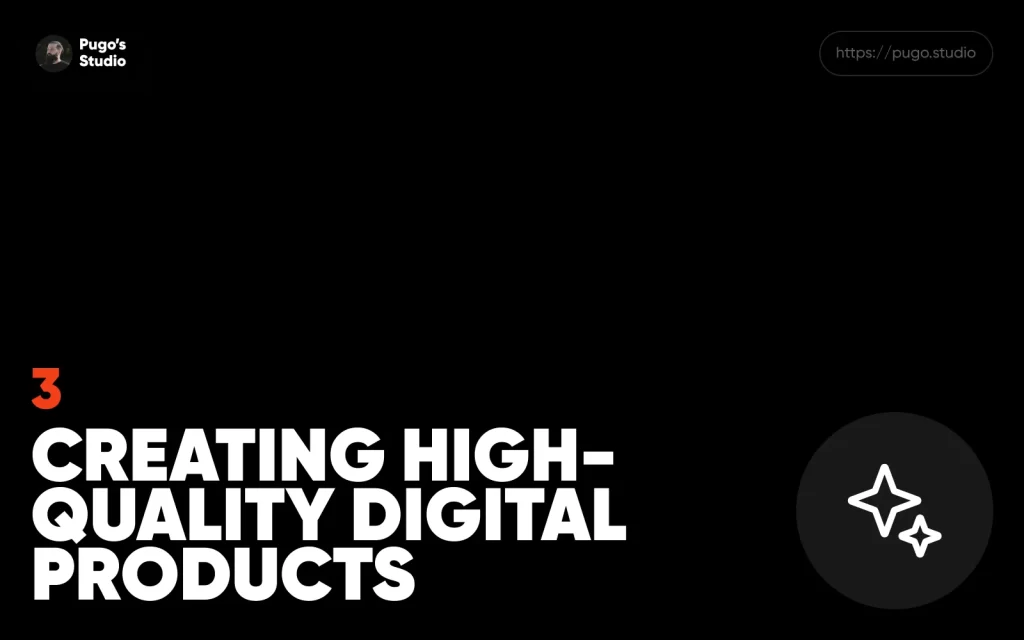
3. Creating High-Quality Digital Products
Types of Digital Products
As you embark on your digital product journey, you’ll find that the possibilities are virtually endless. I’ve personally dabbled in quite a few types and wanted to share some insights.
eBooks
These are digital books that convey valuable insights or spin a captivating tale. I’ve found that formats like PDF, ePub, or Kindle work well. eBooks can traverse a multitude of topics, from self-help to technical guides, mirroring your interests and expertise.
Online Courses
These are structured educational programs delivered through engaging mediums like video, text, quizzes, and assignments. Platforms like Teachable, Udemy, or even your own website can serve as hosts. The beauty of online courses is their diversity, ranging from concise tutorials to in-depth training programs.
Printables
These are downloadable files that customers can print at home. From planners and journals to coloring pages and educational worksheets, printables offer a creative outlet that’s easy to monetize. Platforms like Etsy or your own e-commerce site can serve as your storefront.
Software
Software includes programs or applications that carry out specific tasks or provide entertainment. This category spans mobile apps, desktop software, plugins, and SaaS products. Creating software can be a bit technical but collaborating with developers can smooth the process.
Templates
Templates are pre-designed files that users can tailor to their needs. These lifesavers span website themes, notion templates, graphic design templates, presentation slides, and social media graphics. Selling templates on marketplaces like Gumroad, LemonSqueezy, Creative Market, or ThemeForest can be a game-changer.
Digital Art
This category allows your creativity to shine through illustrations, photographs, and other digital art forms. These can be sold as standalone pieces or incorporated into other products like prints and merchandise.
Music and Audio Files
This includes tracks, sound effects, audiobooks, and other audio content. Platforms like iTunes, Spotify, or even your own website can serve as your stage.
Podcasts: These are your very own audio programs or series that cover a variety of topics. It’s like having your own radio show, but better! Podcasts can be a source of income through sponsorships, premium content, or even donations from your lovely listeners.
Photography: This is all about those stunning digital images that can be used for so many things – from website design and advertising to print material. It’s your chance to share your unique view of the world with others.
Graphics & Illustrations: These are your one-of-a-kind digital graphics or illustrations that can brighten up everything from websites and social media to print materials and merchandise. Let your creativity run wild!
Webinars: These are live or recorded presentations, workshops, or lectures that offer valuable insights on a particular topic. Webinars are your chance to share your knowledge, often used for educational or marketing purposes.
Digital Magazines: These are your online periodicals, often focused on specific subjects or interests. They can be monetized through subscriptions, advertising, or single-issue sales. It’s like having your own publication, but without the need for a printing press!
Always keep in mind that the digital product you decide to create should not only reflect your passion and expertise, but also kindle joy in the process of creation. This way, your journey towards crafting your product becomes not just a profitable venture, but a delightful and fulfilling experience as well.
Creating top-notch content is absolutely vital for the success of your digital products. Here’s a friendly roadmap to help you craft the best possible digital products:
Start with Research and Planning
Embark upon a thorough exploration of your topic. Get to know your audience and their needs intimately. Chart out a blueprint of your content, pinpointing the key ideas you’d like to bring to life.
Harness the Power of Content Creation Tools
- eBooks: Unleash your wordsmith powers with tools like Microsoft Word, Google Docs, or Scrivener. Make your words visually appealing with Canva or Adobe InDesign.
- Online Courses: Create engaging video content with Camtasia, ScreenFlow, or a simple webcam and microphone setup. Use platforms like Teachable, Thinkific, or Kajabi to deliver an immersive learning experience.
- Printables: Design vibrant printables using Canva, Adobe Illustrator, or Adobe InDesign. Make sure your designs are ready to print and impress.
- Software: Dive into the world of coding with tools like Visual Studio, Xcode, or Android Studio. Collaborate with developers on platforms like GitHub or GitLab to bring your software vision to life.
- Templates: Use Adobe Photoshop, Illustrator, or Sketch to craft versatile templates. Make sure they’re easy to customize and a pleasure to use.
- Digital Art: Unleash your creativity with tools like Adobe Photoshop, Illustrator, Procreate, or Corel Painter.
- Music and Audio Files: Create captivating audio content using tools like Audacity, GarageBand, or Adobe Audition.
Edit and Refine
Give your content a thorough review for accuracy, clarity, and quality. Polish your work until it shines. Don’t hesitate to seek feedback from peers or hire a professional editor to ensure your content is top-tier.
Test Your Product
Give your digital product a thorough testing to ensure it performs perfectly. This is especially crucial for software and online courses. Gather feedback from beta testers and fine-tune your product until it’s just right.
Remember, creating a stellar digital product is a journey. Take it one step at a time, and before you know it, you’ll have a product that you’re proud to share with the world!
Design and Packaging
Let’s talk about creating killer digital products! You know, the kind that not only look awesome but are user-friendly and stand out in the crowd. Here’s the scoop on how to do just that:
Make it Gorgeous
This is all about visual appeal. Use high-quality images, stunning graphics, and eye-catching typography. Make sure your design reflects your brand identity to keep everything consistent.
Keep the User in Mind
Design your product thinking about your users’ needs. Make it easy to navigate and use. For instance, an eBook should have a clickable table of contents, and an online course should have a clear and intuitive layout.
Invest in the Right Tools
Get your hands on professional design tools like Adobe Creative Cloud (Photoshop, Illustrator, InDesign), or if you prefer something more accessible, Canva is a great option. These tools will help you create products that look sleek and professional.
Showcase Your Product
Create mockups and previews to show off your product. Use tools like Placeit or Smartmockups to generate realistic product images. This gives your potential customers a sneak peek at what they’re getting.
Brand It Up
Incorporate your branding elements (logo, colors, fonts) into your product design. This is a powerful way to build brand recognition and trust with your audience.
Package it Right
Even though digital products are intangible, how you package them for presentation and delivery makes a big difference. For example, use attractive cover designs for eBooks, engaging thumbnails for online courses, and well-designed templates for printables.
With these tips, you’re all set to create digital products that are not only useful but also look incredible and deliver a fantastic user experience. Now, go forth and create!
Without high-quality content and professional design, your digital products will likely drown in the sea of competition. Only by producing superior quality and aesthetically pleasing designs can you hope to distinguish your offerings and provide true value to your customers.
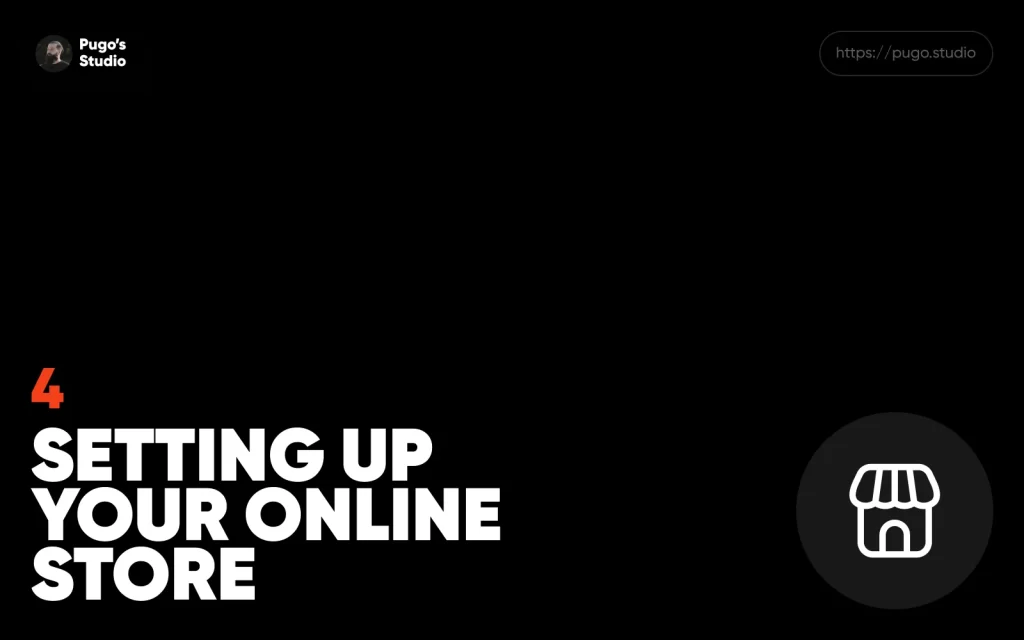
4. Setting Up Your Digital Product Online Store
Here’s the deal: choosing the right platform to hawk your digital products is a pivotal move. So, let me give you a quick rundown on some of the top contenders in the game:
Shopify
This one’s a user-friendly workhorse! It offers customizable templates, a massive app store, and rock-solid customer support. It’s a jack-of-all-trades, handling all kinds of products. But watch out for those monthly subscription fees, extra costs for premium themes and apps, and transaction fees if you’re not using Shopify Payments.
Etsy
Etsy is a bustling marketplace filled to the brim with eager customers. It’s a breeze to set up and has low upfront costs. It’s a dream for selling printables and digital art. But remember, it’s a crowded market out there, and Etsy’s listing and transaction fees can add up. It’s more about individual products rather than entire stores.
Gumroad
Gumroad keeps things simple and straightforward. It’s a gem for selling digital products. There are no monthly fees, and it only charges a percentage per sale. Plus, it’s got some nifty built-in email marketing tools. However, customization is limited, and it’s not ideal for larger stores.
LemonSqueezy
Get ready to meet LemonSqueezy, the new kid on the block in the world of digital product platforms! Designed specifically for digital products, it offers a super easy setup and customizable product pages, making it a breeze to get your online store up and running. And the cherry on top? It handles EU VAT automatically! Plus, you won’t have to worry about monthly fees. You only pay a small fee per sale. Keep in mind, though, as a newer platform some advanced features might still be on their way. But LemonSqueezy sure is a promising and exciting option for digital entrepreneurs!
WooCommerce
(WordPress Plugin): WooCommerce is all about customization. It has a large community and a plethora of plugins. No monthly fees, but you’ll need to fork out for hosting. However, this one requires a bit more technical know-how, and costs can stack up with premium plugins and themes.
Teachable
Teachable is tailor-made for online courses. It boasts a user-friendly course builder and built-in marketing tools. But, it’s got monthly fees and limited design customization. Also, if you’re on the free plan, expect transaction fees.
BigCommerce
BigCommerce can handle big stores and is quite scalable. It’s got no transaction fees and plenty of built-in features. It’s also pretty good for SEO. But, like Shopify, it has monthly subscription fees and extra costs for premium themes and apps.
Remember, it’s not about choosing the most popular platform, but the one that fits your business like a glove. Choose wisely!
Let’s talk website essentials! Building an e-commerce website that not only looks great but also performs like a dream is a mix of several magic ingredients:
- Domain Name: Start by picking a catchy, brand-representing domain name that’s easy to remember. This is your online address, after all. Get yours from registrars like GoDaddy, Namecheap, or Google Domains.
- Hosting: Next, you need a reliable host – the digital space where your website lives. If you’re going the self-hosted route like WooCommerce, pick a trustworthy provider like Bluehost, SiteGround, or WP Engine.
- Website Design: Now comes the fun part – design! Go for a professional, user-friendly look that reflects your brand’s personality. Take advantage of customizable templates from your chosen platform, or hire a designer for a unique style. And remember, your design should be responsive, looking fabulous on all devices.
- Navigation: Make your website a breeze to explore. Organize your products into clear categories, keep your menu structure simple, and don’t forget the search bar.
- Product Pages: Your product pages should be the star of the show. Fill them with high-quality images, detailed descriptions, pricing info, and glowing customer reviews. And sprinkle in some compelling calls-to-action (CTAs) to nudge visitors towards making a purchase.
- About and Contact Pages: Add a personal touch with an “About” page that tells your unique story, and offer easy ways to connect on your “Contact” page. Think email, contact form, social media links – the works.
- Blog: A blog is your secret weapon to share valuable content, drive more traffic, and boost your SEO game. Keep it fresh with regular articles that your audience will love, all related to your niche and products.
- SEO Optimization: Last but not least, make sure your website is a magnet for search engines. Use those juicy keywords, pump out high-quality content, and ensure your site loads faster than a cheetah on a treadmill.
And there you have it, folks! Your recipe for a successful e-commerce website. Now, go forth and create.
Payment Processing
Let’s talk about money, specifically how it goes from your customer’s pocket into yours. When it comes to online sales, this is done through what’s called a payment gateway. This might sound a bit like techno-jargon, but it’s essentially a tool that processes credit card payments for online and offline stores. It’s the digital equivalent of a point-of-sale terminal located in most brick-and-mortar retail outlets.
Popular options include heavyweights like PayPal, Stripe, Square, and Shopify Payments. It’s important to choose one that not only fits your needs but also supports your target market and preferred currencies.
Now, let’s get serious for a moment and talk about security. The internet can be a wild place, and you need to make sure your customers’ data is safe when they’re shopping with you. That’s where SSL (Secure Sockets Layer) encryption comes in. It’s a security protocol that safeguards your customers’ credit card numbers, social security numbers, and login credentials. Most e-commerce platforms offer SSL certificates, or you can purchase one from your hosting provider.
Another way to make your customers’ shopping experience more enjoyable is by offering various payment methods. Think credit/debit card payments, digital wallets like PayPal, Apple Pay, Google Pay, and, if applicable, local payment methods. The more options, the better!
Just be aware of the transaction fees associated with different payment gateways. These fees typically range from 2.5% to 3.5% per transaction, plus a small fixed fee.
Also, aim to make the checkout process as smooth as possible to reduce cart abandonment. Keep the number of steps to complete a purchase to a minimum, and offer guest checkout options.
Finally, be sure to implement fraud detection and prevention measures to protect your business. Use tools provided by your payment gateway to identify and block fraudulent transactions.
In the end, setting up an efficient and secure payment process is an essential step in creating a seamless shopping experience for your customers. It’s one of the foundations of a successful digital product business, so take the time to get it right.

5. Pricing Your Digital Products
Pricing Strategies
Let’s talk about the art of setting the right price for your digital products. Trust me, it’s more than just picking a number out of thin air! A well-planned pricing strategy is crucial to actually make those sales and turn a profit.
So, what are some of the common pricing models you can use? Let’s break it down:
Fixed Price
It’s as simple as it sounds! You set a single, one-time price for your product. It’s easy for your customers to understand and perfect for standalone products like eBooks or templates. The flip side? This model limits recurring revenue and might not capture the full value of top-notch products. For instance, you might decide to sell an eBook for a flat rate of $19.99.
- Pros: Simple and straightforward, easy for customers to understand, suitable for standalone products like eBooks or templates.
- Cons: Limits the potential for recurring revenue, may not fully capture the value of high-quality products.
- Example: Selling an eBook for $19.99.
Tiered Pricing
Now, this is getting interesting! With tiered pricing, you offer different versions of a product at different prices. The more your customers pay, the more features or content they get. It’s great because it lets your customers pick a tier that suits their needs and budget, while you get the chance to boost revenue with premium options. But be warned, it needs careful planning to make sure each tier offers distinct value. Picture an online course with three tiers: Basic ($49), Standard ($99), and Premium ($199).
- Pros: Allows customers to choose a pricing level that fits their needs and budget, increases potential revenue by offering premium options.
- Cons: More complex to implement, requires careful planning to ensure each tier offers distinct value.
- Example: An online course with three tiers: Basic ($49), Standard ($99), and Premium ($199).
Subscription Models
The idea here is to charge customers regularly (like each month or year) to give them ongoing access to your product or service. It’s great for building long-term customer relationships and giving you a steady income stream. It works wonders for membership sites, software, or continuous content. But remember, you’ll need to keep delivering value to retain subscribers and it might be more challenging to get initial sign-ups. An example could be a monthly subscription of $15 for access to exclusive design templates and resources.
- Pros: Provides a steady stream of recurring revenue, builds long-term customer relationships, suitable for membership sites, software, or ongoing content.
- Cons: Requires continuous delivery of value to retain subscribers, more challenging to attract initial sign-ups.
- Example: A monthly subscription of $15 for access to exclusive design templates and resources.
Remember, setting the right price for your digital products is an art and a science. It’s all about understanding your customers, knowing your product’s value, and choosing a strategy that matches your business goals. Happy pricing!
Factors to Consider When Setting Prices
Some insider tips on setting the perfect price for your digital products.
Market Research
First things first, you’ve got to know your market. What’s the going rate for products similar to yours? What are your customers willing to shell out? A little competitive intelligence can go a long way in helping you find that sweet spot – a price that’s attractive to customers but also keeps your bank balance happy.
Cost of Production
Next, let’s talk about costs. From the software you use, to your design time, hosting fees, marketing efforts and even the time you pour into your work – it all adds up! Your pricing needs to cover these expenses and leave some room for profit. After all, we’re in this to make money, right?
Target Audience
Now, think about your customers. Are they high-end shoppers or bargain hunters? Would they appreciate a premium product with a higher price tag, or are they more likely to go for something more affordable? Understanding your customers’ mindset is key to setting a price they’ll be comfortable with.
Value Proposition
Here’s the fun part. What makes your product unique? What major problem does it solve? What incredible benefits does it offer? If your product is a game-changer, it deserves a price tag that reflects its value. Don’t be shy to price it higher if it’s offering a ton of value.
Sales Goals
What are you aiming for? Do you want to sell a ton of products at a lower price, or are you going for exclusivity with a higher price tag? Your pricing should align with your sales goals and overall business strategy.
Psychological Pricing: Last but not least, let’s talk about the power of perception. Pricing strategies like ending prices in .99 or .95 can make your product seem cheaper than it is. Offering bundles or discounts can encourage customers to spend more. It’s all about making your price seem as attractive as possible.
There you have it! Keep these factors in mind, and you’ll be well on your way to setting a price that’s just right for your digital product. Happy pricing!
Perceived Value
Wondering how to price your digital product? Well, it’s all about gauging and boosting its perceived value. Here’s how you can make it happen!
- Quality and Uniqueness: First off, make sure your product is top-notch and boasts features or content that sets it apart from the rest. The better the quality, the higher the price it justifies.
- Branding: Build a brand that screams trust and quality. When customers see professional branding, they’re more likely to perceive your product as valuable, and that means you can up the price tag.
- Customer Testimonials and Reviews: Got happy customers? Show them off! Positive feedback and success stories work wonders for boosting your product’s perceived value and justifying those higher prices.
- Packaging and Presentation: Don’t skimp on design and presentation. The better your product looks, the more valuable it seems. It’s all about making a good impression!
- Bonuses and Add-ons: Throw in some extra goodies or complementary products. This not only ups the overall value but also makes your main product seem like a steal.
- Scarcity and Exclusivity: Limited-time offers or exclusive access can create a sense of urgency and up your product’s perceived value. Remember, customers are often willing to shell out more for products that seem rare or exclusive.
With the right pricing strategy and a focus on boosting perceived value, you’ll be setting prices that not only attract customers but also maximize your earnings. The key here is to understand your market, costs, and audience. That way, you’ll find the optimal price point for your digital goods.
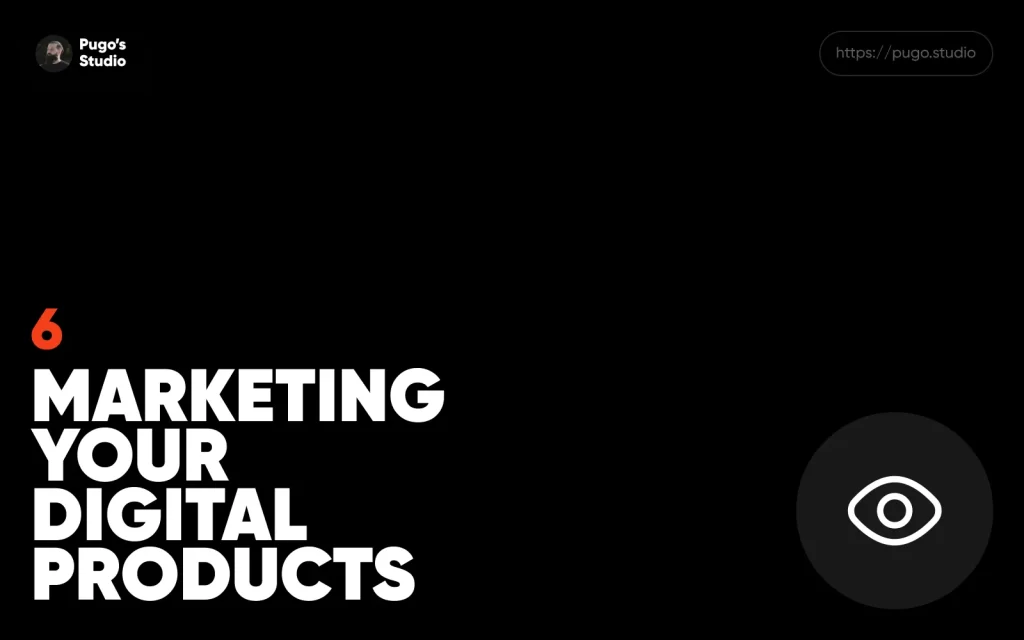
6. Marketing Your Digital Products
Building an Online Presence
Creating a strong online presence is an absolute must when you’re selling digital products. So here’s the golden ticket to building and nurturing your presence online:
Social Media
Platforms like Instagram, Facebook, Twitter, LinkedIn, and Pinterest are your new best friends. Use them to shout about your products from the digital rooftops. Share content that gets people talking, chat with your audience, and use targeted ads to catch the eye of potential customers.
- Hot tips: Keep your posts coming, make sure your visuals are top-notch, chat with your followers through comments and messages, and use hashtags and trends that are all the rage in your niche.
Blogs
Got a blog on your website? Great! Use it to share content that’s so good, it could be bottled. This not only shows you know what you’re talking about, but it also gets more people swinging by your site.
- Hot tips: Craft articles that inform and entertain, make sure your blog is SEO-friendly, guest post on other blogs, and don’t forget to include calls-to-action (CTAs) that lead readers to your products.
SEO (Search Engine Optimization)
This is your secret weapon to climb up those search engine results. When you’re easier to find, more potential customers can fall in love with your products.
- Hot tips: Do your keyword research, give your meta titles and descriptions some TLC, build high-quality backlinks, and ensure your website is mobile-friendly and as fast as a greyhound.
And there you have it, your roadmap to a robust online presence. Now, go out there and make some noise!
Email Marketing
Email marketing is an absolute game-changer when it comes to building deep connections with potential customers and driving those all-important sales.
Building an Email List
First things first, you’ve got to start gathering those email addresses from visitors to your website. How do you do that, you ask? Well, one proven strategy is to offer incentives like free resources, exclusive discounts, or access to unique content. Trust me, everyone loves a freebie!
- Pro Tips: Make use of pop-ups, landing pages, and sign-up forms strategically placed around your site to attract subscribers. Don’t forget to shout about your email list on social media and even consider collaborations to expand your reach. You’ll have a growing list of engaged subscribers in no time!
Creating Effective Email Campaigns
Once you’ve built your list, it’s time to start sending out those emails. Regular, valuable emails are key to keeping your subscribers engaged and spreading the word about your amazing products.
- Pro Tips: Make sure to segment your email list so you can tailor your messages to different audience groups. Use compelling subject lines to grab attention, personalize your content to make your subscribers feel special, and always include clear Calls To Action (CTAs). To make your life easier, automate campaigns for welcome sequences, product launches, and follow-ups using handy tools like Mailchimp, ConvertKit, or ActiveCampaign.
Remember, email marketing isn’t just about selling. It’s about creating a community and fostering relationships. So, get out there, connect with your audience, and watch your business grow!
Content Marketing
Engage your audience like never before – Let’s talk about content marketing!
Content Marketing is a powerful strategy that involves creating and sharing valuable, relevant, and engaging content to attract and retain an audience. It’s all about storytelling, providing valuable information, and engaging with your audience. It’s not just about selling, but about building trust and relationships, driving brand awareness, and generating leads. So, let’s dive in and explore the exciting world of content marketing together. Ready? Let’s go!
Content Creation
First off, you’ll want to create an array of valuable content that your audience will love. We’re talking blog posts, videos, infographics, podcasts, and social media posts. But remember, the key here is to provide value and solve problems for your audience. So, make a habit of creating and sharing high-quality content that truly resonates with your target market.
Produce a variety of content types, including blog posts, videos, infographics, podcasts, and social media posts.
- Tips: Focus on providing value and solving problems for your audience. Consistently create and share high-quality content that resonates with your target market.
Content Distribution
Next up, you’ll want to distribute your content across multiple channels to reach as many people as possible. This could mean utilizing social media, email newsletters, guest posting, and content syndication platforms like Medium. And here’s a pro tip: repurpose your content into different formats to maximize its reach!
Share your content across multiple channels to reach a broader audience.
- Tips: Utilize social media, email newsletters, guest posting, and content syndication platforms like Medium. Repurpose content into different formats to maximize reach.
Engagement
But don’t stop there! You’ll also want to encourage interaction with your content to build a community around your brand. Ask your audience questions, invite comments, and host live sessions or webinars. And here’s the kicker: be sure to respond to comments and messages promptly. This will foster a sense of connection and trust with your audience.
Encourage interaction with your content to build a community around your brand.
- Tips: Foster connection and trust by promptly responding to comments and messages, hosting live sessions or webinars, and inviting feedback.
Paid Advertising
Excited about boosting your digital product sales? Let’s talk about Paid Advertising!
It’s the high-octane fuel that can propel your online business to new heights. By investing in paid advertising, you can strategically place your digital products in front of a large and targeted audience.
Imagine this, your online course or eBook popping up on potential customers’ screens, just when they’re searching for something similar. It’s like having a billboard in the digital world!
So, are you ready to take the plunge and explore the world of paid advertising? Trust me, it’s an adventure worth embarking on for your digital product business.
If you’re looking to reach a larger audience quickly, paid advertising could be your golden ticket. Let’s dive into some popular options:
Google Ads: Imagine your ad popping up in search results and on websites within the Google Display Network.
- Pros: It’s like a laser-guided missile, highly targeted with measurable results, and can drive immediate traffic.
- Cons: Keep in mind, it can be a bit pricey and requires constant fine-tuning.
Social Media Ads: Platforms like Facebook, Instagram, Twitter, LinkedIn, and Pinterest are like your own personal billboards.
- Pros: You can target specific demographics, interests, and behaviors. Plus, they’re visually engaging and perfect for boosting brand awareness and conversions.
- Cons: It requires an ongoing budget and can be competitive and costly depending on your niche.
Retargeting Ads: It’s like a friendly reminder to folks who have previously visited your website or engaged with your content.
- Pros: It’s a great way to increase conversion rates by re-engaging interested users, and it’s relatively cost-effective.
- Cons: If not done right, it can come off as intrusive. Also, it requires a well-defined audience.
Influencer Marketing: Team up with influencers in your niche and let them give your products a shout-out to their audience.
- Pros: It’s like getting a recommendation from a trusted friend and helps reach new audiences.
- Cons: Keep in mind, it can be expensive and the results depend on the influencer’s authenticity and engagement.
By smartly combining a rock-solid online presence, engaging email marketing, compelling content marketing, and strategic paid advertising, you’re all set to create a marketing strategy that not only drives traffic but builds lasting relationships and boosts sales for your digital products. Let’s go for it!
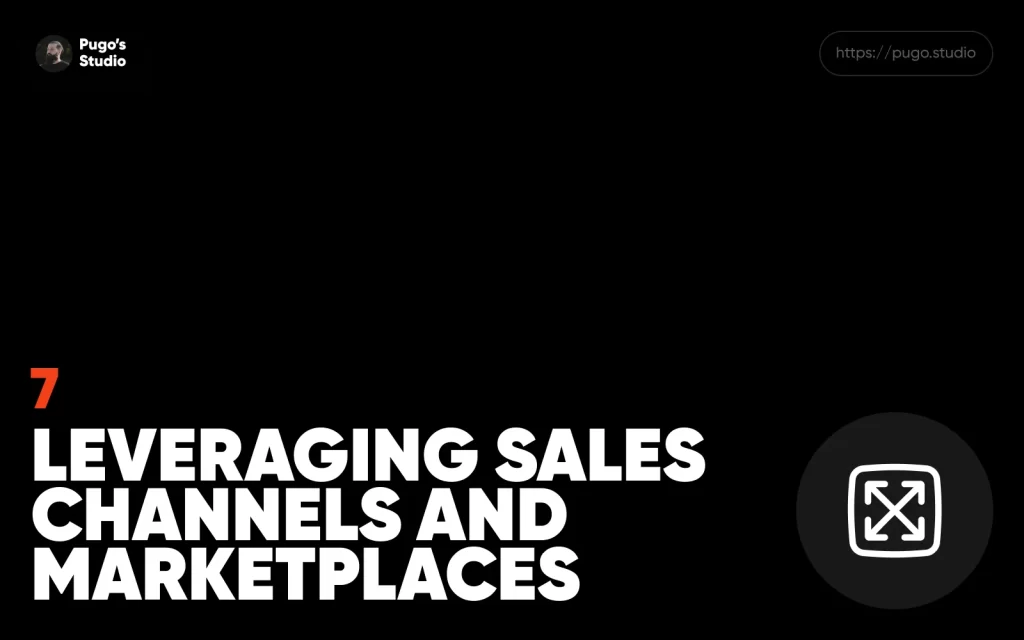
7. Leveraging Sales Channels and Marketplaces
Thriving in Digital Marketplaces
Unleashing your digital products in the bustling world of online marketplaces can catapult your reach to uncharted heights. Let’s delve into the perks and drawbacks of some widely-recognized platforms:
Etsy:
- The Good Stuff: Imagine tapping into a vast, ready-made customer base. Easy setup? Check. Perfect for handmade, vintage, and creative digital goods? Absolutely! Plus, it’s a winner for SEO and discovery.
- The Not-So-Great: Brace yourself for high competition. Listing and transaction fees can add up. Customization and branding? Not so much. And it leans more towards individual products rather than full-scale stores.
Amazon:
- The Good Stuff: Picture accessing a colossal reach and credibility; a powerful search engine at your fingertips, and the potential for a high volume of sales. For eBooks, Kindle Direct Publishing (KDP) is the way to go.
- The Not-So-Great: Be prepared for a crowded market. Fees, commissions, and stringent rules can be a challenge. And when it comes to branding and customer experience, control is somewhat limited.
Creative Market:
- The Good Stuff: Ideal for digital design products like templates, fonts, graphics. You’ll be hitting a targeted audience of creative professionals and a supportive community.
- The Not-So-Great: Commission fees can bite. High competition is a reality. Being niche-specific might limit your reach for other types of digital products.
Gumroad:
- The Good Stuff: It’s as simple as pie! No monthly fees to worry about, charges only a percentage per sale. There’s a built-in audience and works well for various digital products like eBooks, courses, software.
- The Not-So-Great: Customization options are limited. It may not be the best fit for large-scale stores due to fewer features compared to full-blown e-commerce platforms.
Udemy and Skillshare:
- The Good Stuff: Tailor-made for online courses. Huge student base, marketing, and promotional support in place. A solid potential for passive income.
- The Not-So-Great: Competition can be fierce. Revenue share model can eat into earnings. Control over pricing and promotions is limited. Quality control and course approval processes can be a tad tedious.
Remember, every platform has its unique flavor. Choose the one that suits your product and audience the best, and you’ll be on your way to digital product stardom!
Let’s dive into some crucial tips for success in online marketplaces:
- Listing Optimization: Enhance your listings with top-notch images, comprehensive descriptions, and targeted keywords. It’s not just about being seen, it’s about captivating your potential customers.
- Competitive Pricing: Understand your market. Research comparable products and set prices that balance competitiveness and profitability. It’s about value, not just cost.
- Customer Engagement: Be proactive in building relationships. Swiftly respond to inquiries and reviews, fostering trust and enhancing your brand’s reputation.
- Promotions and Discounts: Who doesn’t love a good deal? Run timely promotions and offer discounts to lure new customers and stimulate sales. It’s about creating excitement and driving action.
Using Affiliates
Setting up an affiliate program can significantly expand your reach and increase sales. Here’s how to get started:
Craft Your Program Master Plan:
- Commission Structure: It’s your call on how much commission to offer affiliates. Typically, rates hover between 10% to 30% of the sale price—it depends on the product and your profit margins.
- Payment Terms: You’re in charge here. Define the how and when of affiliate payments. Will it be monthly? Or once they hit a minimum payout threshold?
- Tracking and Reporting: Pick an affiliate software that’ll keep you on top of sales, clicks, and commissions with precision.
Select Your Affiliate Software:
- Platforms: Looking for the full package? Affiliate management platforms like ShareASale, CJ Affiliate, or Rakuten Marketing have got you covered. If you want something more streamlined, tools like AffiliateWP (for WordPress) or Gumroad’s built-in affiliate features could be your best bet.
- Integration: Make sure your chosen software plays nice with your e-commerce platform for smooth sailing in tracking and reporting.
Onboard Your Affiliates:
- Outreach: Connect with bloggers, influencers, and industry gurus whose audience matches your target market. Email, social media, networking events—use them all to link up with potential affiliates.
- Affiliate Networks: Join the club! Get into affiliate networks to reach experienced marketers on the hunt for fresh products to promote.
Supply Your Marketing Toolkit:
- Banners and Ads: Craft standout banners, ads, and other visuals that affiliates can flaunt on their websites and social channels.
- Content Templates: Make life easier for your affiliates—offer email templates, blog post structures, and social media post inspirations to boost their promotional prowess.
- Product Information: Give them the lowdown on your product. Features, benefits, unique selling points—the works. It’ll help affiliates create enticing content.
Track and Tweak:
- Performance Tracking: Stay on top of your affiliates’ performance with your chosen software. Keep an eye on key metrics like clicks, conversions, and sales.
- Feedback and Support: Be there for your affiliates. Answer their questions, offer feedback, and help them level up their promotional game.
- Adjust Commission Rates: Keep your commission rates under review. Adjust them to stay competitive and attractive to affiliates.
By tapping into multiple sales channels and marketplaces, and building a killer affiliate program, you can widen your reach, reel in new customers, and ramp up your digital product sales. Let’s make some noise in the marketplace!
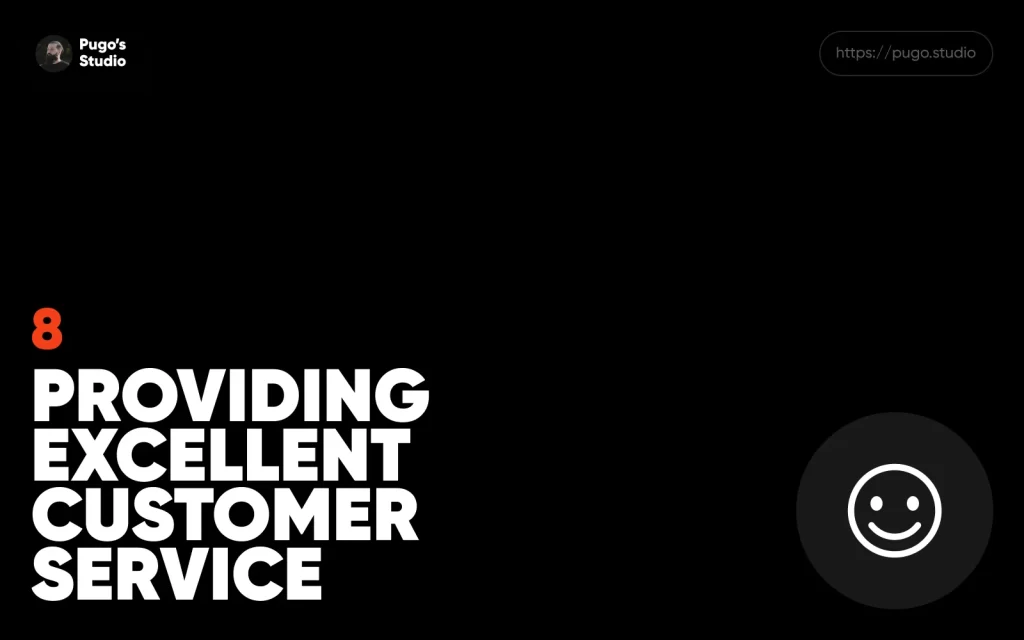
8. Providing Excellent Customer Service
Customer Support
Hey there! Let’s talk about the importance of first-class customer service. It’s more than just answering questions – it’s about building deep trust, keeping your customers coming back, and sparking word-of-mouth referrals. Here’s how to ace it:
Why Stellar Customer Service Rocks:
- Trust Builder: Swift and helpful replies show your customers that you care about them and their concerns.
- Reputation Booster: Positive customer service experiences can lead to rave reviews and recommendations. Hello, great reputation!
- Loyalty Maker: Happy customers are likely to stick around and recommend your products to others. Win-win!
Tools and Top Tips:
- Email Support: Set up a dedicated support email and aim to respond within 24 hours. Use nifty tools like Help Scout or Zendesk to keep things organized.
- Live Chat: Add live chat to your website for instant help. Tools like LiveChat, Intercom, or Tawk.to can help you manage it like a pro.
- Knowledge Base: Create a killer FAQ section on your website to tackle common questions. This lets your customers find answers fast without needing to reach out.
- Social Media: Keep an eye on your social channels for customer questions and respond promptly. Tools like Hootsuite or Buffer can help you stay on top of things.
- Automation: Set up automated responses for common questions for instant help. Just make sure these are actually helpful and point customers in the right direction.
- Personalization: Use customers’ names, know their history, and tailor responses to their needs. This shows you value them as individuals, not just another ticket.
- Follow-Up: Once an issue is resolved, check back in to make sure they’re happy and see if there’s anything else you can do.
With these tips, you’ll be well on your way to providing top-notch customer service that keeps your customers thrilled and coming back for more!
Handling Feedback
Feedback from your customers? It’s pure gold. It’s your secret weapon to take your products and services from good to outstanding. Here’s how to make the most out of it:
Harvesting Feedback:
- Surveys: Want the lowdown on what your customers think? There’s no better way than surveys. Tools like SurveyMonkey, Typeform, or Google Forms are your best friends here.
- Reviews and Ratings: Give your customers the floor. Encourage them to leave reviews and ratings on your website, product pages, or third-party platforms like Trustpilot or Yelp.
- Social Media and Forums: Keep your ear to the ground on social media platforms, forums, and communities. Engage, encourage feedback, and above all, listen.
- Direct Communication: Don’t be shy. Ask for feedback during customer interactions. Every conversation is a goldmine of insights.
Turning Feedback into Action:
- Spot the Trends: Don’t just collect feedback—analyze it. Look for patterns, recurring issues, and suggestions. They’re your roadmap to improvement.
- Prioritize Smartly: Not all feedback is created equal. Prioritize based on its impact on customer satisfaction and your business goals.
- Make Changes: Heard your customers loud and clear? Great. Now show them you did. Use their feedback to make real, tangible improvements.
- Keep Them in the Loop: Changed something based on customer feedback? Let them know! It’s a great way to show you value their input.
- Never Stop Improving: Make feedback a part of your business DNA. Keep collecting, analyzing, and acting on it.
Great customer service isn’t just about solving problems—it’s about using customer insights to make your products and services better. So go ahead, embrace feedback, and let it guide you to success.
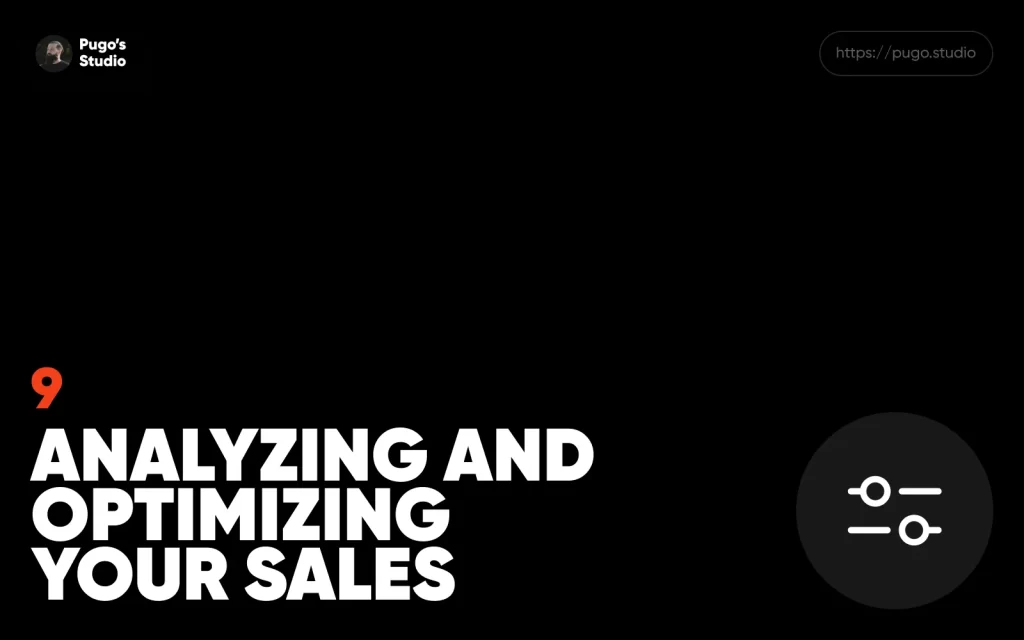
9. Analyzing and Optimizing Your Sales
Tracking Performance
Attention! It’s absolutely critical to keep tabs on key metrics if you want a clear picture of your sales performance and opportunities for growth. Here’s the lowdown:
Sales
Keep a keen eye on your total sales revenue, average order value, and the trajectory of your sales growth. It’s all about the numbers, baby!
Traffic
Count those website visitors or sales page hits. And don’t just count them, get to know them. Where are they coming from? Google search, social media, referrals? These insights are gold!
Conversion Rates
Take a magnifying glass to your conversion rates at each stage of the sales funnel. From website visits to purchases, from email sign-ups to purchases – every bit counts!
Customer Acquisition Cost (CAC)
It’s vital to know the price tag on each new customer. Stack this up against your average customer lifetime value (CLV) to make sure you’re on the profitable side of things.
Return on Investment (ROI)
Measure the ROI for each of your marketing campaigns and sales efforts. This way, you know what’s working and where to pump in more energy and resources.
Customer Retention Rate
How many of your customers are coming back for more? A high retention rate is a solid sign of satisfied customers and a stellar product or service.
Average Revenue Per User (ARPU)
Calculate the average revenue each customer brings in over a specific period. This gives you a glimpse into customer spending habits and shines a light on potential upsell opportunities.
Remember, tracking these metrics isn’t just a task to check off your list. It’s a powerful strategy to drive your business forward. So, get excited and start crunching those numbers!
A/B Testing
Ready to level up your sales game? Let’s talk A/B testing, or split testing as it’s also known. This is your secret weapon to figuring out what really clicks with your audience and boosts your performance.
First up, you need to pinpoint what you want to put to the test. This could be anything from your product page layout and pricing to those all-important call-to-action buttons or even email subject lines.
Next, it’s time to get creative. Cook up two or more variations of the element you’re testing. Maybe you’ve got a couple of ideas for pricing structures or some different design ideas for your product page – this is your chance to try them out!
Now, here comes the fun part. You’re going to divide your website traffic or email list into random segments. Each of these lucky groups gets to see a different version of the element you’re testing.
Keep a keen eye on the performance of each version. You’ll want to track key metrics like conversion rates, click-through rates, and sales. Which version is winning the popularity contest?
Once you’ve crowned your champion, it’s time to roll out the winning version as your new standard. But the fun isn’t over yet! Continue to use A/B testing to optimize other elements and watch your sales soar even higher.
So, are you ready to dive into the world of A/B testing and see your sales skyrocket? Let’s do this!
A/B testing, also known as split testing, is a method of comparing two versions of a webpage or marketing campaign to determine which one performs better. Here’s how to use A/B testing to optimize your sales:
- Identify Areas for Testing
- Create Variations
- Split Your Traffic
- Measure Results
- Implement Changes
Continuous Improvement
Now, Let’s chat about continuous improvement, shall we? It’s an absolutely essential ongoing process that involves consistently refining your products, marketing strategies, and customer experience based on feedback and market trends. So, how do we do this? Glad you asked!
Customer Feedback
This is crucial. Always be in the loop with your customers’ thoughts. Use surveys, reviews, and good old-fashioned communication. This feedback is a goldmine for identifying where you can level up.
Market Trends
Stay sharp and keep an eye on the industry’s pulse. What are your competitors up to? How is consumer behavior shifting? Adapt your products and marketing strategies accordingly to stay ahead of the game.
Iterative Updates
Don’t be afraid of change! Implement small tweaks to your products and marketing campaigns based on what your feedback and data tell you. Regular testing and refining are your friends here, pushing you towards optimal results.
Employee Involvement
Don’t forget your team! Everyone should be involved in the improvement process. Encourage them to share their brilliant ideas and insights – a fresh perspective can work wonders.
Data-Driven Decisions
Let’s get nerdy and play with data analytics. Monitor those key metrics, conduct A/B tests, and use these insights to steer your strategy.
By keeping an eye on performance metrics, playing around with A/B testing, and focusing on continuous improvement, you’re setting yourself up for success. You’ll optimize your sales process, skyrocket customer satisfaction, and pave the way for long-term success with your digital products. Let’s dive in!
TL;DR
How to Create and Sell Digital Products – A Beginner’s Guide.
- Understanding Digital Products: Digital products offer benefits such as low production costs, scalability, and potential for passive income.
- Finding Your Niche and Audience: Selecting the perfect niche aligns with your interests and skills, and understanding your ideal customer is key.
- Creating Digital Products: Create high-value, user-friendly digital products with careful content creation and design.
- Setting Up Online Shop: Choose a suitable platform for your digital storefront and focus on creating a successful e-commerce site.
- Pricing Strategies: Set the right price based on the value your product offers your customers.
- Marketing Strategies: Build your online presence and utilize email marketing, content marketing, and paid advertising to promote your products.
- Sales Channels and Marketplaces: Consider different marketplaces for selling and set up an affiliate program to boost your sales.
- Customer Service Excellence: Excellent customer service is crucial, and feedback should be used to improve your products and services.
- Sales Analysis and Optimization: Track key metrics, optimize your sales process through A/B testing, and continuously improve based on feedback and market trends.
This guide serves as a comprehensive roadmap for venturing into the world of selling digital products. The path to success involves dedication and a commitment to continuous learning and improvement.
The Last Word
You’ve now been armed with all the knowledge you need to venture confidently into the world of selling digital products. From understanding digital products to identifying your niche, setting up your online store, marketing your products, and handling customer service like a pro, this guide serves as your comprehensive roadmap.
Here’s a Quick Recap
- Digital Product 101: We broke down what digital products are and the numerous benefits they offer, including low production costs, scalability, and potential for passive income.
- Finding Your Niche and Audience: We shared tips on selecting the perfect niche that aligns with your interests and skills, and how to get to know your ideal customer.
- Creating Killer Digital Products: We walked you through the process of creating digital products that are high in value and user-friendly, complete with tips on content creation and design.
- Setting Up Shop Online: We explored popular platforms to set up your digital storefront and the essential ingredients of a successful e-commerce site.
- Pricing Your Digital Products: We delved into various pricing strategies and how to set the right price based on the value your product offers your customers.
- Getting the Word Out: We discussed strategies to build your online presence and make the most out of email marketing, content marketing, and paid advertising.
- Sales Channels and Marketplaces: We weighed the pros and cons of selling on different marketplaces, and how to set up an affiliate program to boost your sales.
- Customer Service Excellence: We emphasized the crucial role of excellent customer service and how to use feedback to improve your products and services.
- Sales Analysis and Optimization: We covered how to keep an eye on key metrics, optimize your sales process through A/B testing, and continuously improve based on feedback and market trends.
Time to Take Action
Armed with this wealth of knowledge, it’s time for you to dive in! Start carving out your niche, creating your products, and setting up your online storefront. Remember, the path to success is paved with dedication and a commitment to continuous learning and improvement.
To give you a leg up, we’ve put together a free guide packed with additional resources and tips. Click here to claim your free guide and kickstart your journey in selling digital products now!
Thank you for joining us in this journey. We wish you all the best in your digital product venture. Go on, show the world what you’ve got!
Additional Resources
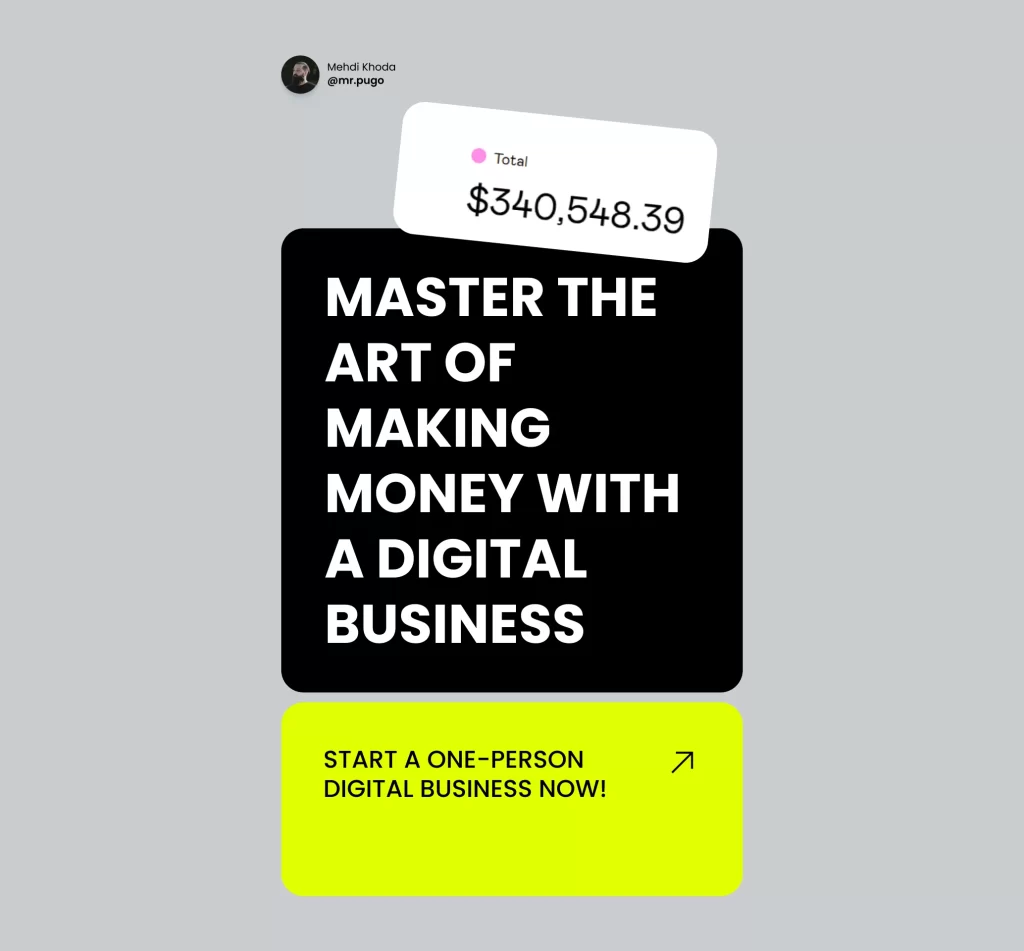
Feeling pumped to get your digital business off the ground? Fantastic! I’ve got the perfect resource for you – the DBM, Digital Business Mastery Bundle. This is your comprehensive toolkit, packed with in-depth guides, books, checklists, roadmaps, and a myriad of ideas to choose from. Not to mention the handy templates and tools designed to streamline every aspect of your digital product business.
This bundle is your secret weapon to bypass the grind of the 9-5 routine, stop trading your precious time for money, and instead, start your thrilling journey in the digital business realm. With the DBM bundle, you’re not just starting – you’re starting strong, equipped with every bit of knowledge, skill, guidance, and tool you need, all compiled in one place.
Think about it – you can side-step many unnecessary obstacles, wrong turns, and blunders that often slow down your progress. With the DBM bundle, you’re set to grow your digital product business at a pace far quicker than you can imagine.
So, are you ready to fast-track your success and make your mark in the digital product landscape? Check out the DBM bundle and get ready to hit the ground running!
Everything you need to start your Digital Product Business
Frequently Asked Questions (FAQs)
What are digital products?
Digital products are goods or services that are delivered electronically, such as eBooks, online courses, software, templates, and digital downloads.
How can I create high-quality digital products?
To create high-quality digital products, focus on providing value to your audience. Conduct thorough research, use professional tools for content creation and design, and ensure your products are user-friendly and well-presented.
How do I price my digital products?
Pricing your digital products depends on factors such as production costs, perceived value, market demand, and competition. Research similar products in your niche and test different pricing strategies to find the optimal price point.
How can I market my digital products effectively?
Effective marketing strategies for digital products include building an online presence, utilizing social media, content marketing, email marketing, and paid advertising. Tailor your marketing efforts to reach your target audience and showcase the unique value of your products.
What platforms can I use to sell my digital products?
Popular platforms for selling digital products include Shopify, Etsy, Gumroad, and Amazon. Choose a platform that aligns with your business goals and offers the features you need to showcase and sell your products effectively.
How can I provide excellent customer service for my digital products?
Provide responsive and helpful customer support through email, live chat, and social media. Use customer feedback to improve your products and services continuously, and prioritize customer satisfaction to build loyalty and trust.
How do I track and analyze the performance of my digital products?
Track key metrics such as sales, traffic, conversion rates, customer acquisition cost (CAC), and customer retention rate. Use analytics tools to monitor performance and make data-driven decisions to optimize your sales process.
What are some common pitfalls to avoid when selling digital products?
Common pitfalls include underpricing your products, neglecting customer support, failing to understand your target audience, and not keeping up with market trends. Avoid these pitfalls by conducting thorough research and staying proactive in your marketing and customer service efforts.

















